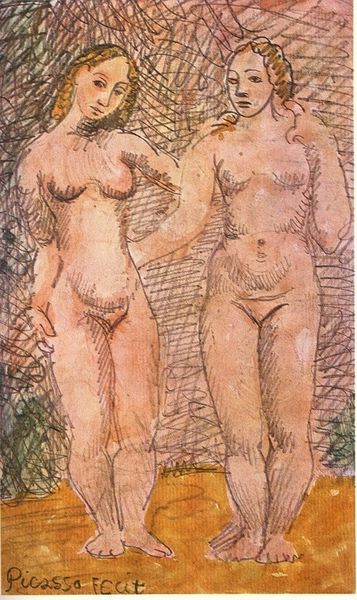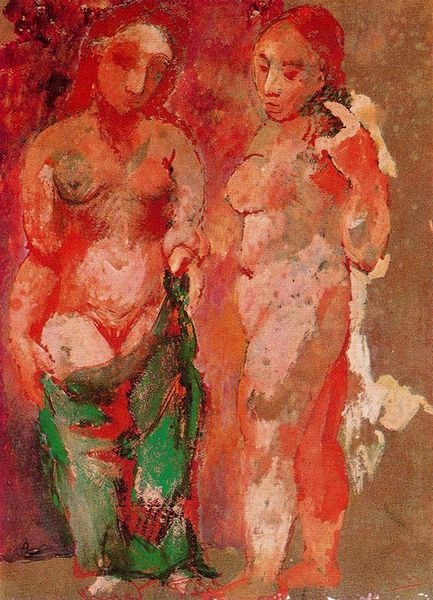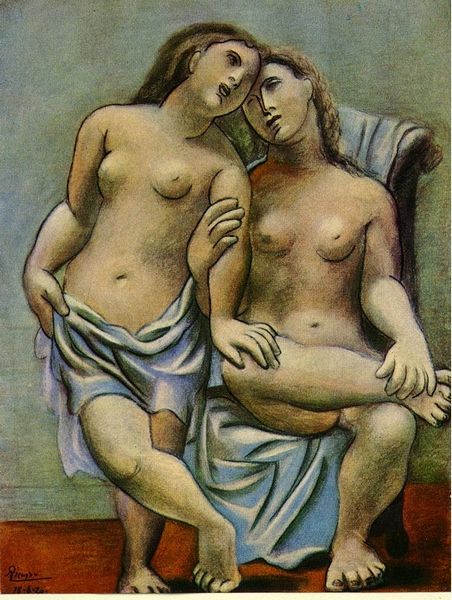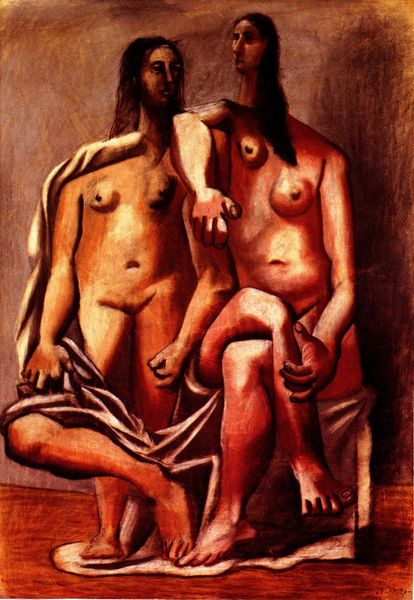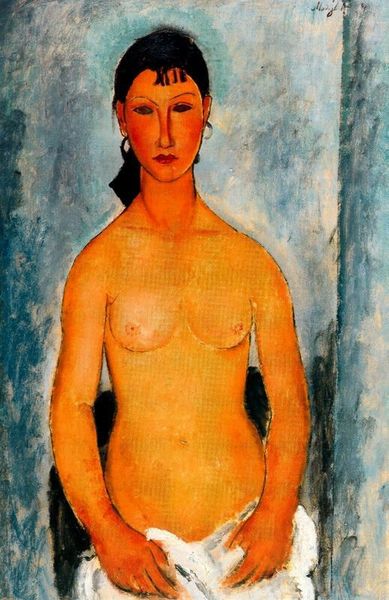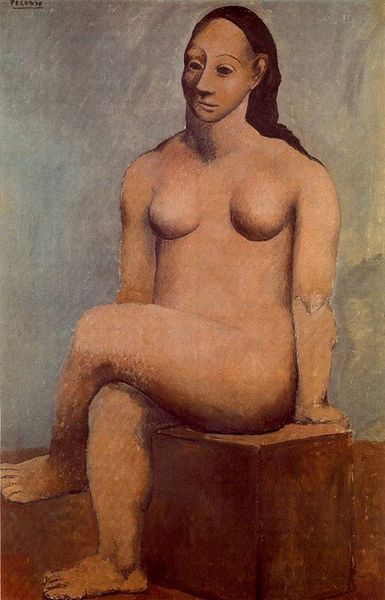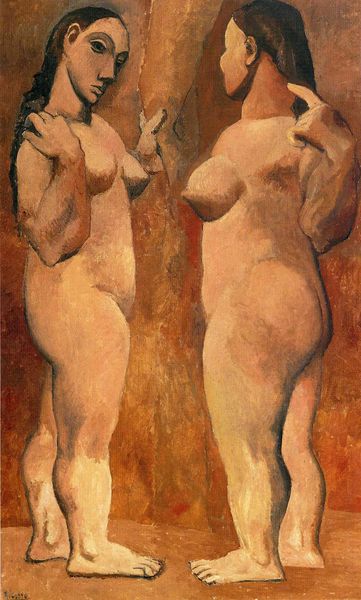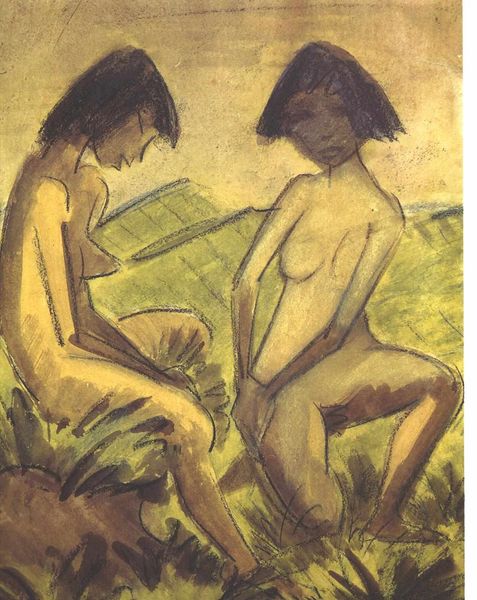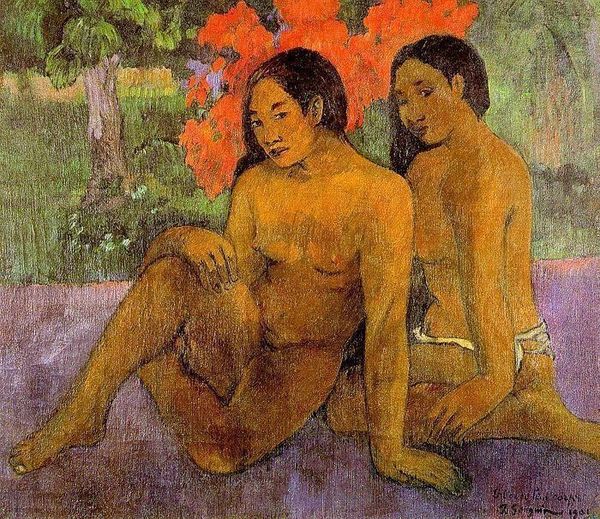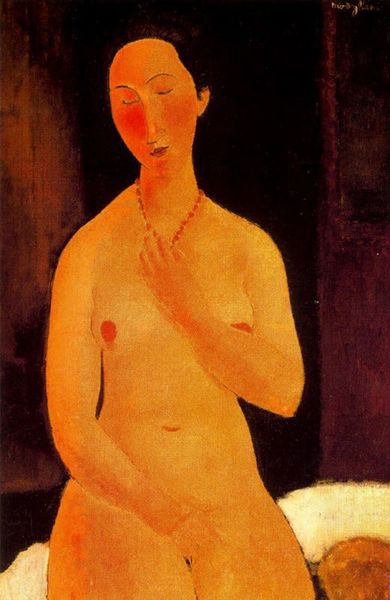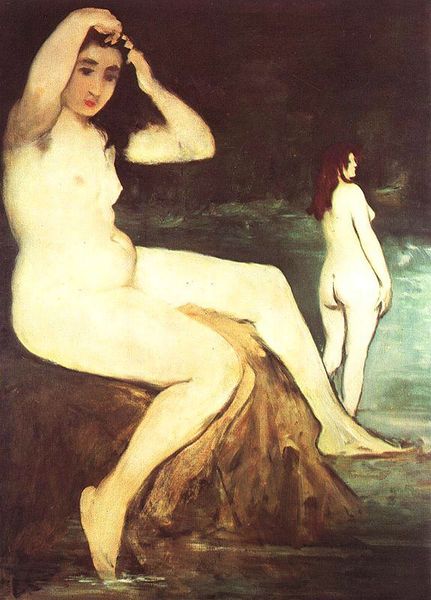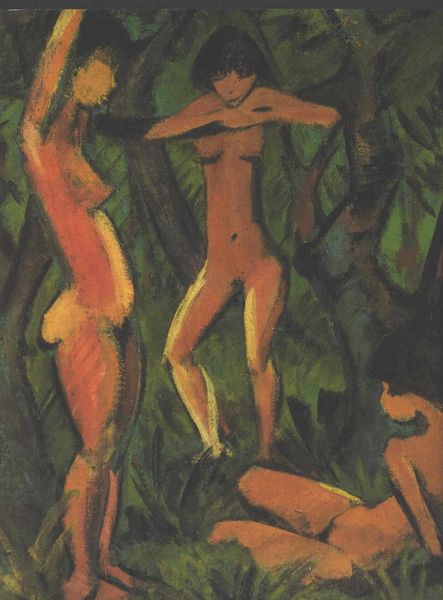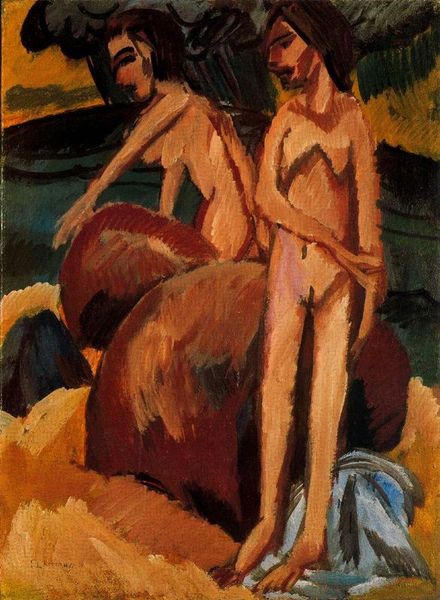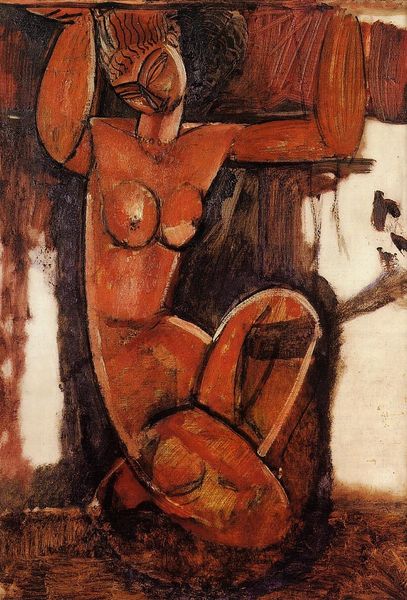
Dimensions: 150 x 99.7 cm
Copyright: Public domain US
Curator: This is Pablo Picasso’s "Two Nude Women," painted in 1906. It offers a fascinating look at Picasso wrestling with classical themes just before the full explosion of Cubism. Editor: My gut reaction? Rawness. There’s an unsettling, almost defiant quality to these figures. The palette is limited, earthy—very immediate, wouldn't you agree? Curator: Absolutely. We can see a departure from idealized female nudes prominent throughout art history. Instead, these figures possess a grounded, almost sculptural quality, their forms defined by bold strokes and a conscious distortion of proportion. This subverts traditional expectations, challenging conventional beauty standards prevalent during that era. Editor: It's as if Picasso is deconstructing the female form, not to objectify, but to reveal a kind of primitive essence, or force. The faces are quite mask-like, with large, intense eyes that remind me of ancient Cycladic figures. What do you think? Are there connections here? Curator: Absolutely, these abstracted features hint at the influence of Iberian sculpture and non-Western art, elements which significantly shaped Picasso's visual vocabulary in this period. He's not simply replicating reality, he's interrogating representation itself, drawing upon the burgeoning fields of ethnology and anthropology to deconstruct Western artistic traditions. It mirrors anxieties within broader colonial and anthropological discourses grappling with defining the ‘primitive’ versus the ‘modern.' Editor: You’re right. Thinking of masks… that brings out another unsettling point. It forces us to examine our gaze. Who are we looking at, and what assumptions are we bringing to the table about womanhood and beauty? Is this even about 'beauty'? Curator: Exactly! The gaze becomes implicated. Picasso confronts the viewer, challenging preconceived notions of femininity, identity and representation. The ambiguous space surrounding them heightens this effect, isolating the figures and encouraging deeper introspection. Editor: For me, it resonates on so many levels. On one level, a complete upending of accepted practice. But beyond this? These bodies somehow convey both strength and fragility in a profoundly affecting way. I feel strangely…moved? Curator: And that emotional complexity, I think, reveals its ongoing power to provoke dialogue and question established narratives.
Comments
No comments
Be the first to comment and join the conversation on the ultimate creative platform.
